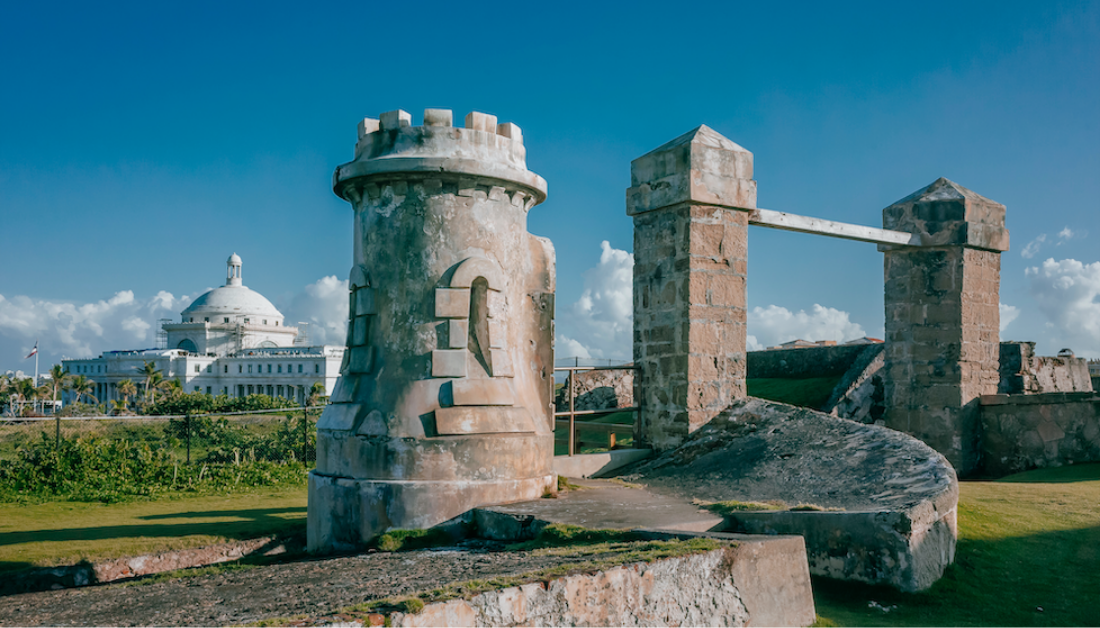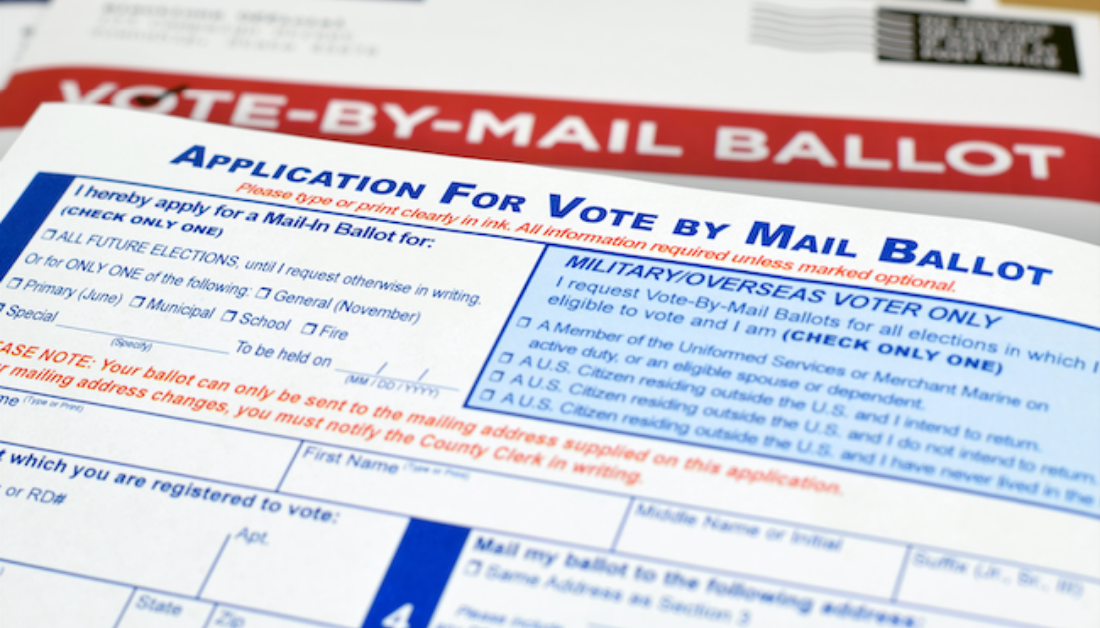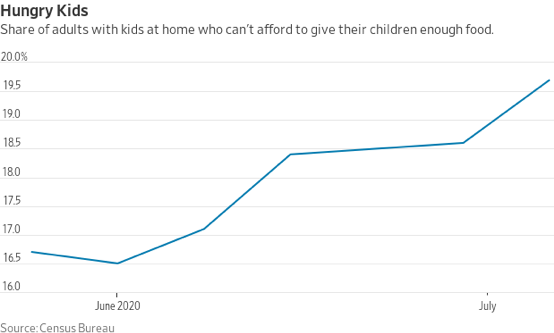
Published on August 20, 2020 / Leer en español
Dear Readers:
It’s the third week in August and the quadrennial election season is upon us. In Puerto Rico, we just finished primary elections, after an embarrassing first attempt during which less than half of polling places were able to open. That debacle led us to think about the state of Puerto Rico’s institutions in a newspaper column we share with you here.
In the United States, it is time for political party conventions, low-key affairs this year due to the COVID-19 pandemic, and for candidates to prepare for the “home stretch” of the campaign season after Labor Day. My colleague, Rosanna Torres, Director of CNE’s office in Washington, D.C., shares her thoughts about what is happening at the Post Office and how it could affect the results of the presidential elections.
If the race for president tightens after September, as many analysts expect, and the election ends up being closer than many people think, then imagine the backlash if millions of ballots are left uncounted due to problems with mail delivery. At the very least it would add a political legitimacy dimension to an already complicated health, economic, and racial crisis in the United States.
Finally, a bit of a public service announcement. Please fill out your Census form. It takes only ten minutes of your time and the return on your investment, not only in terms of additional federal funds, but in better-designed policies to address social issues and new social science research, far outweighs that low personal cost.
—Sergio M. Marxuach, Editor-in-Chief
Insights + Analysis from CNE

Institutional Stagnation
By Sergio M. Marxuach, Policy Director
In 1948 Puerto Rico’s net income per capita was $256 per person. The road, electricity and telecommunications’ infrastructure was rudimentary, not to say artisanal. That year a lot happened on the island. And believe it or not, on November 2 of that same year a general election was held. The votes were counted and the results reported, relatively quickly, taking into account the limitations of the time.
In 2020 the net income per capita in Puerto Rico is approximately $17,500 per person. The road, electricity and telecommunications’ infrastructure has its flaws but it is much better than that of 1948. And believe it or not, on August 9, an attempt was made to hold a primary election, but the votes could not be counted and the results were not reported. In fact, in more than half of the electoral precincts, the voting could not even take place.
How is it possible that our grandparents’ generation was able to execute and implement all kinds of public projects, but our generation of government officials cannot even open polling places for an election? I think the answer lies, in part, in the underdevelopment, or rather, the stagnation of Puerto Rico’s institutions. In simple terms, in 1948 we had less money but better institutions.

The Postal Service, the Decennial Census, and the Threat to Government Institutions
By Rosanna Torres, Director – Washington, D.C. Office
“…we’re about to find out just how resilient our institutions are, at home and around the world.”
These words, uttered by then-President Barack Obama in late 2016, echo in my mind constantly. Regardless of who stands at the helm of political power, career employees preserve government institutions with their commitment to serve the general population. When funding is spread thin or policy priorities change suddenly, political calculations can pose real threats to government institutions and their operations. At this juncture, when funding for U.S. Postal Service operations is being curtailed and the calendar for the Census Bureau’s Nonresponse Follow-up is shortened a month earlier than its original deadline, there is a serious risk of voter disenfranchisement and population undercounting – two grave threats to the political legitimacy of government institutions.
The U.S. Postal Service
The U.S. Postal Service’s operations are at risk. After the June appointment of Postmaster General Louis DeJoy – a former political operative with no prior career experience at the postal service – there are concerns over how several last-minute policy and management changes implemented under his watch will negatively affect the counting of mail-in ballots ahead of the November 2020 elections, which are expected to increase significantly in light of the pandemic. Just last week, the Postal Service warned it could not guarantee that all mail-in ballots for 46 states and the District of Columbia would arrive on time.
Despite a late attempt to placate concerns over the Postal Service’s ability to handle a surge in mail-in ballots, DeJoy’s statement failed to indicate which specific policy changes would be reversed and how his proposed operational changes will affect the long-term sustainability of the agency. To make matters worse, funding for the USPS is a major point of contention between the House, Senate, and the White House as they attempt to hammer out a future economic relief package. The House Oversight Committee announced a hearing for August 24 to investigate delays and political interference in U.S. Postal Service operations, and House Speaker Nancy Pelosi has called the House back into session this Saturday to legislate on the Delivering for America Act introduced by Rep. Carolyn Maloney. On the Senate side, DeJoy is expected to testify before a joint Homeland Security and Governmental Affairs Committee hearing tomorrow, Friday, August 21. Senate Republicans, on the other hand, released a preliminary “skinny” bill with $10 billion in funding for the Postal Service, a far leaner request than the $25 billion proposed by the House.
The Decennial Census
Under normal circumstances, when individuals don’t self-respond to the Decennial Census, enumerators go door-to-door to follow up with individuals and raise awareness about the importance of filling out the census. This in-person approach increases the likelihood of an accurate count. Due to the COVID-19 pandemic, the nonresponse follow-up period was scheduled to occur between August 11 and October 31st. On August 3rd, however, Census Bureau Director Steven Dillingham announced a revision to that timeline, shortening follow-up operations by a month and finalizing field data collection by September 30, 2020. For the 2010 decennial operations, this follow-up procedure involved around 40 percent of households. Therefore, many academics, labor groups, and Census advocates worry that shortening the data collection period will result in the undercounting of populations that are typically hard to reach. In the case of Puerto Rico, where response rates have lingered at nearly 30 percent of its population – the lowest rate so far – the consequences could be severe, as we have highlighted previously.
As funding and operations are chipped away, there is a legitimate fear of an erosion to two Constitutionally-mandated government institutions that serve all 50 states and the U.S. territories.
Hunger in the United States

Source: Wall Street Journal
The Wall Street Journal reports that “the number of Americans who say they can’t afford enough food for themselves or their children is growing, according to Census data, and it is likely to get larger now that some government benefits have expired. As of late last month, about 12.1% of adults lived in households that didn’t have enough to eat at some point in the previous week, up from 9.8% in early May. And almost 20% of Americans with kids at home couldn’t afford to give their children enough food, up from almost 17% in early June.”
On Our Radar...
![]() California Blackouts – Bloomberg reports that grid operators in California have had to implement rolling blackouts to address higher demand in the middle of a “once-in-a-decade heatwave.” According to the business news service, “California is bracing for more power outages after as many as 2 million residents were plunged into darkness late Friday in the state’s first rolling blackouts since the 2001 energy crisis…The sudden and largely unannounced outages in California began after a power plant malfunctioned and are a stark reminder of the fragility of power grids in the face of extreme weather.”
California Blackouts – Bloomberg reports that grid operators in California have had to implement rolling blackouts to address higher demand in the middle of a “once-in-a-decade heatwave.” According to the business news service, “California is bracing for more power outages after as many as 2 million residents were plunged into darkness late Friday in the state’s first rolling blackouts since the 2001 energy crisis…The sudden and largely unannounced outages in California began after a power plant malfunctioned and are a stark reminder of the fragility of power grids in the face of extreme weather.”
![]() Financing the Vaccine – Funding vaccine research and development is incredibly expensive and risky and there are not enough investors in the private sector willing to take on the risk of failure after years of expensive clinical trials. One possible solution, in the case of a vaccine for COVID-19, according to Andrew Lo and Roger Stein of the Massachusetts Institute of Technology’s Laboratory for Financial Engineering is for governments to issue research-backed obligations (RBOs), a new kind of bond whose repayment depends on the successful development of vaccines. According to Lo in an interview for the New Yorker: “What if the Administration announced that the U.S. Treasury would issue a fifty-billion dollar, three-per-cent, thirty-year government bond?” It would invest in every vaccine-development program that exists, and “for any one vaccine that’s developed, we sell a billion doses.” The portfolio, Lo added, “would just be incredibly profitable.” The basic idea is to diversify the risk by scaling up and to socialize both the risk and benefits of vaccine development.
Financing the Vaccine – Funding vaccine research and development is incredibly expensive and risky and there are not enough investors in the private sector willing to take on the risk of failure after years of expensive clinical trials. One possible solution, in the case of a vaccine for COVID-19, according to Andrew Lo and Roger Stein of the Massachusetts Institute of Technology’s Laboratory for Financial Engineering is for governments to issue research-backed obligations (RBOs), a new kind of bond whose repayment depends on the successful development of vaccines. According to Lo in an interview for the New Yorker: “What if the Administration announced that the U.S. Treasury would issue a fifty-billion dollar, three-per-cent, thirty-year government bond?” It would invest in every vaccine-development program that exists, and “for any one vaccine that’s developed, we sell a billion doses.” The portfolio, Lo added, “would just be incredibly profitable.” The basic idea is to diversify the risk by scaling up and to socialize both the risk and benefits of vaccine development.
![]() A New Testing Strategy – However, we need to keep on living our lives while a vaccine or a safe treatment is developed for COVID-19. In order to do that, we need to do much better with respect to testing for the disease. According to Robinson Meyer and Alexis Madrigal, writing in The Atlantic, “Testing is a non-optional problem. Tests permit us to do the most basic task in disease control: Identify the sick, and separate them from the well. When tests are abundant, they can dispel the fear of contagion that has quieted public life.” Read their report on how “a group of epidemiologists, economists, and dreamers is plotting a new strategy to defeat the virus, even before a vaccine is found.”
A New Testing Strategy – However, we need to keep on living our lives while a vaccine or a safe treatment is developed for COVID-19. In order to do that, we need to do much better with respect to testing for the disease. According to Robinson Meyer and Alexis Madrigal, writing in The Atlantic, “Testing is a non-optional problem. Tests permit us to do the most basic task in disease control: Identify the sick, and separate them from the well. When tests are abundant, they can dispel the fear of contagion that has quieted public life.” Read their report on how “a group of epidemiologists, economists, and dreamers is plotting a new strategy to defeat the virus, even before a vaccine is found.”
